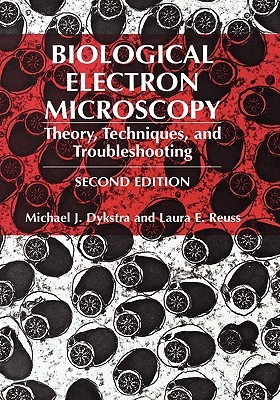
- We will send in 10–14 business days.
- Author: Michael J Dykstra
- Publisher: Springer
- ISBN-10: 0306477491
- ISBN-13: 9780306477492
- Format: 18.5 x 26.3 x 3.8 cm, hardcover
- Language: English
- SAVE -10% with code: EXTRA
Reviews
Description
Electron microscopy is frequently portrayed as a discipline that stands alone, separated from molecular biology, light microscopy, physiology, and biochemistry, among other disciplines. It is also presented as a technically demanding discipline operating largely in the sphere of black boxes and governed by many absolute laws of procedure. At the introductory level, this portrayal does the discipline and the student a disservice. The instrumentation we use is complex, but ultimately understandable and, more importantly, repairable. The procedures we employ for preparing tissues and cells are not totally understood, but enough information is available to allow investigators to make reasonable choices concerning the best techniques to apply to their parti- cular problems. There are countless specialized techniques in the field of electron and light microscopy that require the acquisition of specialized knowledge, particularly for interpretation of results (electron tomography and energy dispersive spectroscopy immediately come to mind), but most laboratories possessing the equipment to effect these approaches have specialists to help the casual user. The advent of computer operated electron microscopes has also broadened access to these instruments, allowing users with little technical knowledge about electron microscope design to quickly become operators. This has been a welcome advance, because earlier instru- ments required a level of knowledge about electron optics and vacuum systems to produce optimal photographs and to avoid crashing the instruments that typically made it difficult for beginners.
EXTRA 10 % discount with code: EXTRA
The promotion ends in 16d.22:20:08
The discount code is valid when purchasing from 10 €. Discounts do not stack.
- Author: Michael J Dykstra
- Publisher: Springer
- ISBN-10: 0306477491
- ISBN-13: 9780306477492
- Format: 18.5 x 26.3 x 3.8 cm, hardcover
- Language: English English
Electron microscopy is frequently portrayed as a discipline that stands alone, separated from molecular biology, light microscopy, physiology, and biochemistry, among other disciplines. It is also presented as a technically demanding discipline operating largely in the sphere of black boxes and governed by many absolute laws of procedure. At the introductory level, this portrayal does the discipline and the student a disservice. The instrumentation we use is complex, but ultimately understandable and, more importantly, repairable. The procedures we employ for preparing tissues and cells are not totally understood, but enough information is available to allow investigators to make reasonable choices concerning the best techniques to apply to their parti- cular problems. There are countless specialized techniques in the field of electron and light microscopy that require the acquisition of specialized knowledge, particularly for interpretation of results (electron tomography and energy dispersive spectroscopy immediately come to mind), but most laboratories possessing the equipment to effect these approaches have specialists to help the casual user. The advent of computer operated electron microscopes has also broadened access to these instruments, allowing users with little technical knowledge about electron microscope design to quickly become operators. This has been a welcome advance, because earlier instru- ments required a level of knowledge about electron optics and vacuum systems to produce optimal photographs and to avoid crashing the instruments that typically made it difficult for beginners.


Reviews